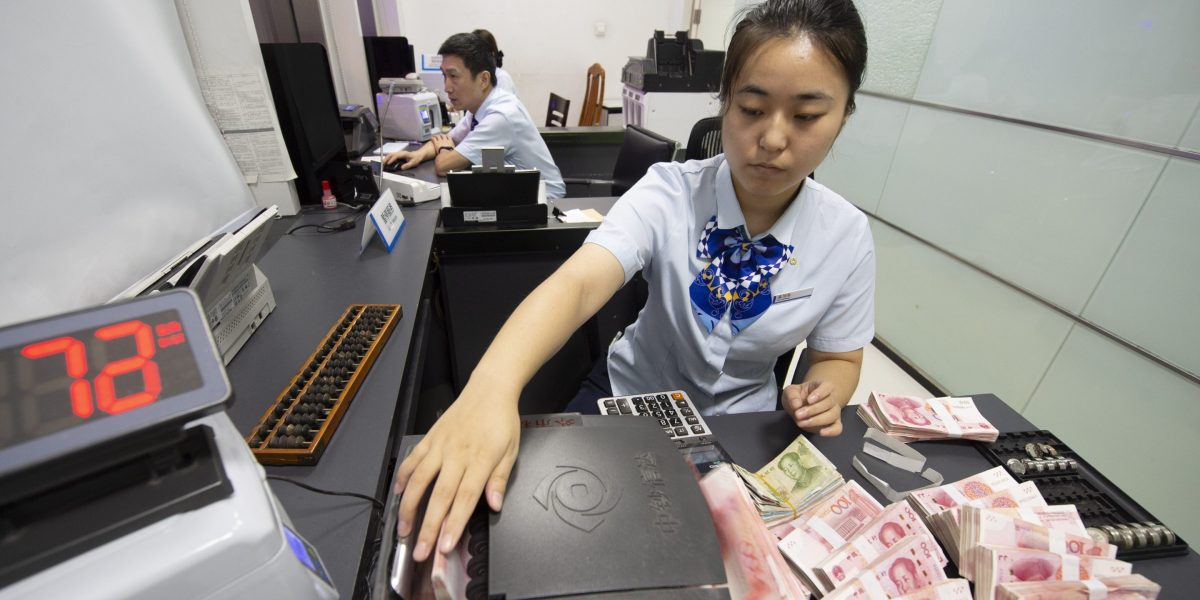
The hugely popular yen carry trade crashed and burned this month when the Japanese currency rose sharply. A lesser-known version of the strategy is likely to be more immune to these types of shocks.
Transactions that involve borrowing yuan to buy assets with higher interest rates are likely to be more resilient as China’s central bank continues to implement loose monetary policy, the Royal Bank of Canada says. The yuan carry trade differs from the yen because it mainly involves exporters and multinationals rather than speculators, data from Macquarie Group Ltd. shows.
Carry trades, which attempt to capitalize on differences in global interest rates, took center stage in financial markets in early August as the demise of the yen version fueled a sell-off in risk assets. Investors benefited after a Bank of Japan rate hike boosted the local currency, which in turn put pressure on the value of higher yield targets such as the Mexican peso and Brazilian real.
“It still makes sense to short the yuan against a basket of emerging market currencies, as it would be counterintuitive to allow the currency to strengthen when the central bank is trying to ease policy,” said Alvin T. Tan, head of the Asian currency strategy. at Royal Bank of Canada in Singapore.
“China’s economy is struggling and the PBOC is widely expected to further ease policy in the coming months,” he said.
A carry trade involving borrowing yuan and investing in a basket of eight emerging market currencies has returned 0.5% this quarter, while the yen-funded alternative is down around 7%, Bloomberg data shows .
The collapse in carry trading in the yen following the BOJ’s July 31 decision spilled over to the yuan, at least initially. The yen rose 6.8% during the week through August 5, while the yuan rose 1.7%. Gains in the funding currency for a carry trade can offset potential returns.
Main differences
There are some substantial underlying differences between the carry trades of the yuan and the yen. The yuan is not fully convertible because authorities restrict the inflow and outflow of foreign currencies to increase their control over the economy. That automatically reduces the size of carry transactions in the yuan compared to those in the yen.
Second, while yen-financed transactions are invested in a wide range of overseas targets, the vast majority of those using borrowed yuan are held in dollars by Chinese exporters and multinational corporations. These only became profitable in 2022 after Federal Reserve rate hikes pushed U.S. borrowing costs above those of China.
Chinese exporters and multinationals have raked in more than $500 billion dollar holdings since 2022, according to Macquarie.
There are a number of reasons why investors are attracted to the carry trade in the yuan, said Wee Khoon Chong, a senior market strategist for the Asia-Pacific region at BNY in Hong Kong.
“The continued liquidity conditions of the offshore yuan may make it too difficult for market participants to resist re-entering carry trades once market volatility subsides,” he said.
Still, the overall size of the yuan-financed carry trades could be limited as the People’s Bank of China has sufficient tools to prevent excessive build-up of speculative positions, Wee wrote in a client note this month.
“Will offshore yuan shorts be rebuilt? Sure, why not?” he said. “There will always be some opportunistic market participants, but we don’t think they are of significant size.”
Trading recommendations
A number of financial firms are telling customers that borrowing yuan will remain a profitable method of financing carry positions.
Citigroup Inc. recently advised investors to bet on the Mexican peso and the Brazilian real against the yuan and the yen in the options market, according to a research report by Dirk Willer from New York, among others.
Goldman Sachs Group Inc. and Nomura Holdings Inc. are also among those recommending that investors short the yuan against a trade-weighted basket of other currencies due to challenging macro headwinds in China and the softer backdrop of the U.S. dollar.





















